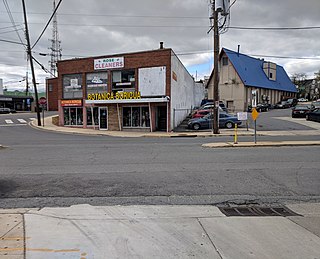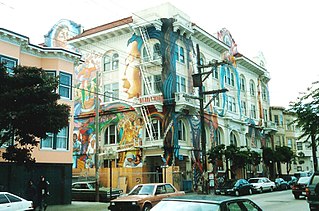
Folklore is shared by a particular group of people; it encompasses the traditions common to that culture, subculture, or group. This includes tales, myths, legends, proverbs, poems, jokes, and other oral traditions. They include material culture, such as traditional building styles common to the group. Folklore also includes customary lore, taking actions for folk beliefs, and the forms and rituals of celebrations such as Christmas, weddings, folk dances, and initiation rites. Each one of these, either singly or in combination, is considered a folklore artifact or traditional cultural expression. Just as essential as the form, folklore also encompasses the transmission of these artifacts from one region to another or from one generation to the next. Folklore is not something one can typically gain from a formal school curriculum or study in the fine arts. Instead, these traditions are passed along informally from one individual to another, either through verbal instruction or demonstration. The academic study of folklore is called folklore studies or folkloristics, and it can be explored at the undergraduate, graduate, and Ph.D. levels.

The art world comprises everyone involved in producing, commissioning, presenting, preserving, promoting, chronicling, criticizing, buying and selling fine art. It is recognized that there are many art worlds, defined either by location or alternative definitions of fine art. Some may use the singular art world to refer only to the elite level of globalized fine art. The art world(s) are continually changing in response both to the creativity of those that create art and in response to social change.

Folk art covers all forms of visual art made in the context of folk culture. Definitions vary, but generally the objects have practical utility of some kind, rather than being exclusively decorative. The makers of folk art are typically trained within a popular tradition, rather than in the fine art tradition of the culture. There is often overlap, or contested ground with 'naive art'. "Folk art" is not used in regard to traditional societies where ethnographic art continue to be made.

A botánica is a religious goods store. The name botánica is Spanish and translates as "botany" or "plant store," referring to these establishments' function as dispensaries of medicinal herbs. Botánicas are common in many Hispanic American countries and Latino communities around the world. Such establishments sell folk medicine, herbs, candles, and statues for Saints and popular gods. They also carry oils, incense, perfumes, and books. Such stores have become increasingly popular in the United States as the Latino communities they serve have grown in that country. A botánica is a site of healing and support, such that one owner says they are a "place of mysteries" due to the metaphysical appreciation of mystery as a synonym for spirit and divinity.
Natalie Kononenko is a professor of folklore currently with the University of Alberta. Kononenko is a major contributor to the study of Ukrainian Blind Minstrels as well as in the area of witchcraft in Slavic cultures. She currently holds the Peter and Doris Kule Chair of Ukrainian Ethnography and is the head of the Slavic and East European section of Modern Languages and Cultural Studies. She attended Radcliffe College and Harvard University.
Ruth B. Bottigheimer is a literary scholar, folklorist, and author. She is currently Research Professor in the department of English at Stony Brook University, State University of New York where she specializes in European fairy tales and British children’s literature. She is also interested in the history of illustration and the religious socialization of children through edited Bible narratives. She “has been hailed as one of America’s foremost Grimm scholars”.
John Laudun is a folklorist, essayist, and professor at University of Louisiana at Lafayette.
James P. Leary is a folklorist and scholar of Scandinavian studies, and a professor at the University of Wisconsin–Madison.

Miranda Bergman is an American contemporary muralist born in 1947 and grew up in grew up in the San Francisco Mission District where she attended Balboa High School. Bergman is known for of the seven women artists who in 1994 created the MaestraPeace mural, the largest mural in San Francisco, which covers The Women's Building. Most of the murals created/co-created by Bergman straddles artistry and social activism, giving her a space to express both social struggles and cultural celebrations. She now lives in Oakland.
Museum folklore is a domain of scholarship and professional practice within the field of folklore studies (folkloristics).

Robert Norman Ross was an American painter, art instructor, and television host. He was the creator and host of The Joy of Painting, an instructional television program that aired from 1983 to 1994 on PBS in the United States, CBC in Canada, and similar channels in Latin America, Europe and elsewhere. Ross would subsequently become widely known through his posthumous internet presence.

Aurelio Macedonio Espinosa Sr. (1880–1958), a professor at Stanford University, was an internationally known scholar because of his studies in Spanish and Spanish American folklore and philology. He was especially known for his promotion of the study of the Spanish language and literature.
Theresa Secord is an artist, basketmaker, geologist and activist from Maine. She is a member of the Penobscot nation, and the great-granddaughter of the well-known weaver Philomene Saulis Nelson. She co-founded, and was the director of, the Maine Indian Basketmakers Alliance (MIBA) in Bar Harbor, Maine.
The Florida Folklife Program is part of the Florida Department of State in the U.S. state of Florida. Recordings of folk performances have been made as part of the program. It has hosted the Florida Folk Fest for 40 years as of 2019. It also hosts other events and performances.

Sarah Gertrude Knott was an American folklorist, and folk festival organizer.
Anna "Anta" Birgitta Rooth was the first Swedish professor of ethnology at Uppsala University. She is known for her research into folklore, especially the Cinderella story.
Michael Ann Williams is an American Folklorist, recognised for her research into vernacular architecture, particularly in Appalachia.
John W. Roberts is an academic who specialises in Folklore, African-American Studies and English Literature. His work has argued for the "integrity, authenticity, and authority" of African-American vernacular traditions.
C. Kurt Dewhurst is an American curator and folklorist. Dewhurst is Director for Arts and Cultural Partnerships at Michigan State University (MSU) and also a Senior Fellow in University Outreach and Engagement. At MSU, he is also Director Emeritus of the Michigan State University Museum and a Professor of English and Museum Studies.
Belle Young Gochenauer Deacon was an American basketmaker and language and folklore expert. As an Alaska Native elder, she held and shared knowledge of the language and traditions of the Athabascan people. She received the National Heritage Fellowship in 1992.







